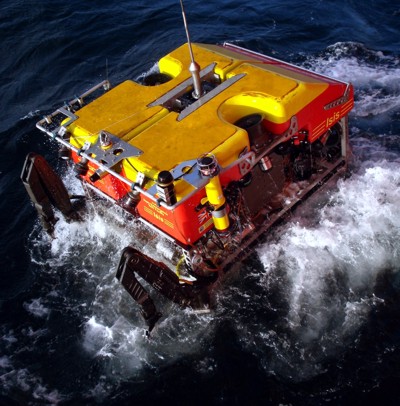How to make an observatory
Observatory designs need to be done so that the different parts work together as seamlessly as possible. Much like you can connect your digital camera to almost any computer, observatory designers are working to make sensors with a plug-and-work functionality, so that when instruments are plugged into a seafloor network they are automatically registered and begin sending data.
 Instead of being lightweight like the landers and rovers used in spaceflight, deep-sea systems must instead be designed for high-pressure, corrosive environments. Space vehicles have to deal with launch stress and a change of 1 atm, where as deep-sea systems in will experience nearly 500 times that change in pressure, without the benefit of solar power. For example, 1 atm equals a pressure of about 1 kg per square cm; at 5000 m depth that’s half a metric ton per square cm.
Instead of being lightweight like the landers and rovers used in spaceflight, deep-sea systems must instead be designed for high-pressure, corrosive environments. Space vehicles have to deal with launch stress and a change of 1 atm, where as deep-sea systems in will experience nearly 500 times that change in pressure, without the benefit of solar power. For example, 1 atm equals a pressure of about 1 kg per square cm; at 5000 m depth that’s half a metric ton per square cm.
The systems are installed in part by using Remotely Operated Vehicles or ROVs. These are robotic submarines with arms that can move instruments into place and connect instruments together to form a seafloor network.
More on the NOCS ROV Isis
More on science with deep-seas ROVs
